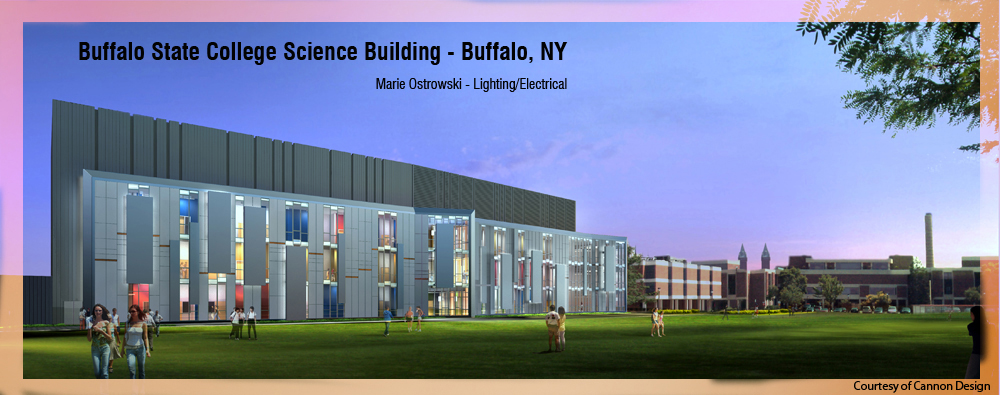Marie Ostrowski is currently in her fifth year of study in the Architectural Engineering (AE) program at The Pennsylvania State University. In May 2010, she will receive her integrated Bachelor/Master of Architectural Engineering degree with a focus on lighting/electrical systems with honors. Concurrently, she will receive a minor in Architectural Studies and EIT certification.
In the summer of 2008, Marie was a participant in the AE Sede di Roma study abroad program. In addition to receiving field-based instruction in topics such as ancient structural design and architecture, this unforgettable experience enabled her to further develop hand drafting and drawing skills. Marie has also completed internships with firms Klepper, Hahn & Hyatt (2007) and Cannon Design (2009). In March 2009, she had the opportunity to take part in an inaugural service project in Honduras called Renew Crew, where she was part of a student team that installed a 2.5 kW photovoltaic system for a school.
Marie is a member of the Penn State student chapters of the Illuminating Engineering Society (IES) and the National Electrical Contractors Association (NECA). She has also held several leadership positions within the Envisioneers, a student organization that promotes the exploration of science and engineering both on campus and within the local community. In addition to these activities, she represents the engineering student body and interfaces with prospective students through her work within the Engineering Dean’s Office and as an Architectural Engineering Envoy.
Note: While great efforts have been taken to provide accurate and complete information on the pages of CPEP, please be aware that the information contained herewith is considered a work‐in‐progress for this thesis project. Modifications and changes related to the original building designs and construction methodologies for this senior thesis project are solely the interpretation of Marie Ostrowski. Changes and discrepancies in no way imply that the original design contained errors or was flawed. Differing assumptions, code references, requirements, and methodologies have been incorporated into this thesis project; therefore, investigation results may vary from the original design.
Senior Thesis Main Page | Penn State | Architectural Engineering | AE Computer Labs | Contact: mso139@psu.edu
| This page was last updated on 9/8/2009, by Marie Ostrowski and is hosted by the AE Department ©2009 |
|---|
